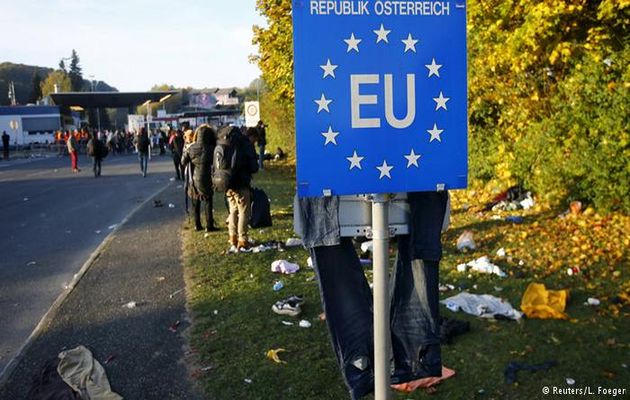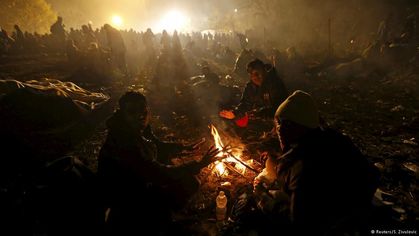Austrian Interior Minister Johanna Mikl-Leitner said the fence will be meant to ensure controlled, orderly entry into Austria, not to keep migrants out altogether.
 The fence will be built to maintain public order / Reuters
The fence will be built to maintain public order / Reuters
Austria’s interior minister, Johanna Mikl-Leitner, told parliament construction of “technical barriers” would begin after about 10 days of planning but gave no exact date for work on the project to begin.
In separate comments to the state broadcaster ORF, she spoke of the need for a fence to maintain public order. The defence minister, Gerald Klug, said containers or railings could be set up to “to control the refugees in an orderly way”.
German Interior Minister Thomas de Maiziere accused Austria on Wednesday of driving refugees to the German border after dark, suggesting it was doing so to help them cross undetected, and he said he expected Vienna to return to an orderly process immediately.
Shortly before de Maiziere's remarks, Austrian Chancellor Werner Faymann said Austria was planning to build barriers at the Spielfeld border crossing with Slovenia through which several thousand migrants pass daily.
"We want to be able to carry out controls on people, and for that one needs certain technical security measures," Faymann, told reporters after a weekly cabinet meeting.
“WE ARE NOT FENCING AUSTRIA IN”
Faymann, who has been particularly critical of right-wing Hungarian Prime Minister Viktor Orban, likening his treatment of migrants to Nazi-era deportations, said Austria's measures were not comparable.
 Austrian Interior Minister Johanna Mikl-Leitner / AP
Austrian Interior Minister Johanna Mikl-Leitner / AP"We are not fencing Austria in", Faymann told a news conference after a weekly cabinet meeting, adding the plan, which had yet to be finalised, did not involve barbed wire.
Mikl-Leitner also insisted there were no plans “to build a fence around Austria”. Still, the project is likely to run into domestic and international criticism for the signal it sends to other nations struggling to cope with the migrant influx.
Mikl-Leitner acknowledged a possible effect on migrants in Slovenia if Austria builds barriers, but said Austria was struggling to deal with the situation “because Germany is taking too few” migrants.
SLOVENIA THREATS WITH A FENCE TOO
Since Hungary sealed its borders a few weeks ago with a razor-wire fence, more than 83,600 people using the western Balkans route into Austria and beyond have been entering Croatia and then Slovenia daily.
Slovenian officials suggested even before Austria’s announcement that they, too, were considering a fence, in their case on the border with Croatia, insisting their small nation cannot cope with the influx.
 Refugeees at the Austria-Slovenia border / Reuters
Refugeees at the Austria-Slovenia border / Reuters"If the situation worsens and the Brussels action plan is not fulfilled, then Slovenia has several scenarios prepared, (including) the installation of a fence guarded by forces," Slovenian Foreign Minister Karl Erjavec said.
THE CRISIS, A EUROPEAN ISSUE
These refugee flows on the Balkans route, cooperation with Turkey, as well as the funds needed to tackle these challenges, were debated early this week at the EU Parliament
During vote on the EU budget for 2016, the Parliament approved to extra funds for handling the needs of member states dealing with the biggest influxes of refugees and migrants together with those of non-EU countries hosting far larger numbers.
Parliament voted a total of €1.16 billion more for migration management measures than the European Commission originally proposed.
"Refugees are not the guilty party, they are victims. We need extraordinary resources to help them, and it is unacceptable that member states do not make this extra effort. Solidarity must be shown in practice, not just preached", said José Manuel Fernandes (EPP, PT) who is steering the bulk of the budget through Parliament.

Las opiniones vertidas por nuestros colaboradores se realizan a nivel personal, pudiendo coincidir o no con la postura de la dirección de Protestante Digital.
Si quieres comentar o